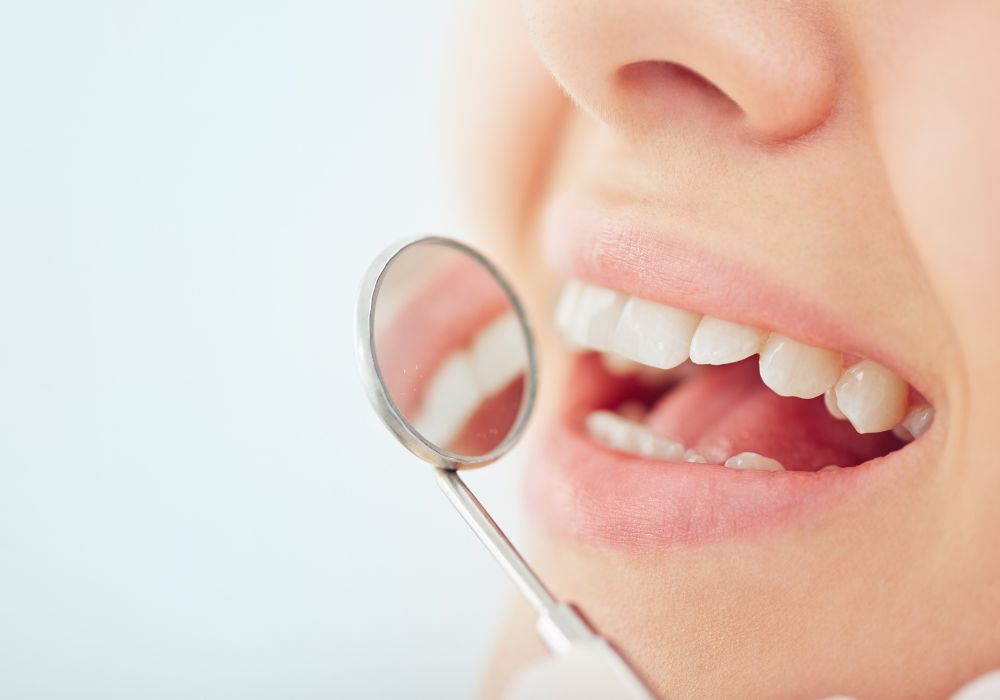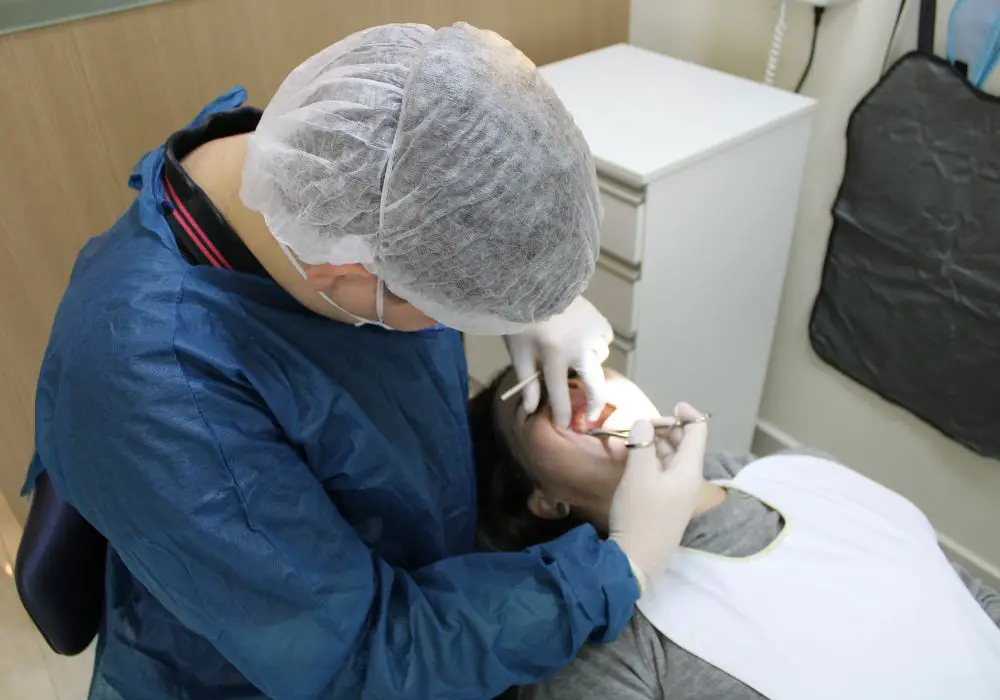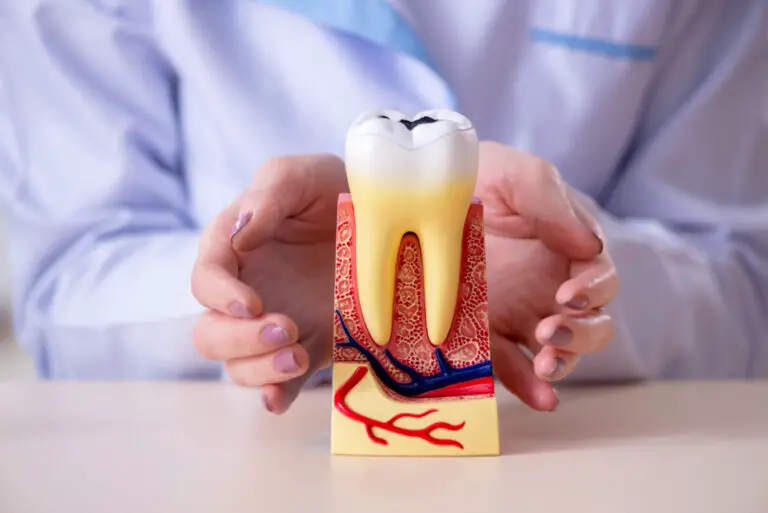Having see through teeth can be an embarrassing and confidence-sapping issue. Also known as translucent teeth, this condition arises when the enamel on your teeth is worn thin or missing, allowing the yellowy dentin underneath to show through. This gives the teeth a discolored and translucent appearance. If you’re wondering “can you get rid of see through teeth?”, the good news is that several effective treatments are available.
What Causes See Through Teeth?

There are a few potential causes of translucent teeth:
Enamel Erosion
The enamel is the hard, protective outer layer of the teeth. Acidic foods and drinks, as well as conditions like acid reflux and bulimia, can erode enamel over time. This erosion thins the enamel, making the yellowish dentin more visible.
Frequent consumption of acidic foods and beverages such as citrus fruits, vinegar, carbonated soft drinks, wine, and fruit juices can wear away enamel. Chronic acid reflux allows stomach acid to contact and dissolve enamel. For those suffering from eating disorders like bulimia, frequent vomiting erodes enamel from the back of teeth. All these factors strip away the enamel layer by layer, gradually exposing the translucent dentin underneath.
Tooth Wear
Normal chewing and teeth grinding (bruxism) also gradually wear down the enamel. Excessive abrasion from aggressive brushing can also thin enamel.
The action of chewing food wears down enamel over time, especially near the biting edges and surfaces of the teeth. Clenching or grinding the teeth also rubs away enamel from the chewing surfaces, thinning it out. Using abrasive toothbrush bristles and scrubbing aggressively when brushing can exacerbate enamel loss, exposing translucency near the gumline.
Genetics
Some people naturally have thinner enamel, making their teeth appear more translucent.
The thickness and strength of tooth enamel is largely determined by genetics. Some people inherit naturally thinner or weaker enamel from birth, providing less protective coverage of the dentin. This genetic tendency toward weaker enamel results in teeth appearing more see-through.
Dental Fluorosis
Too much fluoride consumption during childhood tooth development can cause enamel hypoplasia. This underdevelopment makes enamel thin and porous.
Exposure to too much supplemental fluoride while teeth are still forming beneath the gums can affect enamel maturation. This can cause enamel hypomineralization or hypoplasia. The enamel develops with a thin, porous, undermined structure that is more translucent. Mild fluorosis shows up as white streaks or flecks, while more advanced cases appear as yellow to brown discoloration.
Tetracycline Staining
Tetracycline is an antibiotic that can permanently stain developing teeth if taken by children under 8. It causes grey, brown or yellow discoloration.
Children who take the antibiotic tetracycline while their teeth are still developing can experience discoloration as the drug becomes incorporated into the enamel structure. This causes grey, brownish, or yellowish staining and transparency in the enamel. Tetracycline should be avoided in children under age 8 and pregnant women to prevent this effect.
Signs You May Have See Through Teeth
How do you know if you have transparent teeth? Signs include:
- Teeth appearing yellowish, even after brushing. As enamel thins, the yellowy color of the inner dentin shows through.
- Dark spots or lines visible on the teeth. Localized dark areas indicate advanced enamel loss.
- Increased visibility of ridges on the teeth. Healthy enamel is smooth while exposed dentin shows natural ridges.
- Sensitivity to hot and cold foods. With loss of protective enamel, sensitivity results from dentin exposure.
- Higher translucency near the chewing edges of teeth. Thinning along the biting edges shows up first.
- Yellowish color visible at the biting edges and tips of teeth. These high-impact areas erode fastest.
The back teeth are most prone as they bear the brunt of chewing forces. The upper front teeth are also commonly affected. Their visibility makes enamel loss very apparent. Translucency usually appears symmetrically on corresponding teeth.
Potential Treatments

The good news is that several treatment options can improve the appearance of see through teeth:
Dental Bonding
Bonding applies a tooth-colored composite resin material to the surface of teeth. The dentist applies the material and sculpts it into shape before hardening it with a blue curing light.
The composite resin adheres directly to the tooth surface to form a smooth, opaque covering that masks any translucency. Bonding not only hides thinning enamel, but can also repair chips or gaps for a seamless look.
While bonding won’t withstand heavy biting forces as well as other restoration types, it provides a conservative, affordable option for masking translucency. It usually costs between $100-$400 per tooth.
Dental Veneers
Veneers are ultra-thin shells of porcelain or composite resin that adhere to the front of teeth. They completely cover the visible tooth surface with a natural-looking, opaque material.
A thin layer, usually less than 1 mm, is gently shaved from the front of the tooth. An impression is taken and the veneer is custom-fabricated to precisely fit over the front surface. When bonded in place, veneers fully hide any translucency or discoloration.
Veneers provide a longer-lasting restoration that can dramatically improve the look of see through teeth. They cost $925-$2,500 per tooth.
Dental Crowns
Crowns are tooth-shaped caps placed over the entire visible portion of a tooth. They provide full coverage of see through teeth with a strong, natural-looking material.
The tooth is shaved down approximately 2 mm all around to allow room for the crown placement. An impression is taken and a porcelain or ceramic crown is custom-made to restore the tooth’s shape, size and function. The restoration is then cemented onto the trimmed tooth.
Crowns are more expensive than other options at $500-$3,000 per tooth, but provide the most durable and seamless results.
Teeth Whitening
Whitening strips, gels or professional treatments can lighten the entire tooth, reducing the contrast between the translucent areas and the rest of the tooth. This diminishes the appearance of translucency.
Whitening products contain peroxide compounds that penetrate the enamel to bleach away deep stains. By lightening the overall color, the see-through spots blend in better and are less noticeable. However, whitening cannot make enamel less translucent.
Whitening costs anywhere from $100-$600. However, it may need regular touch-ups to maintain results.
Dental Inlays and Onlays
Inlays and onlays are restorations made of porcelain or composite resin. They fit within the chewing surface of a tooth to cover localized areas of translucency.
An impression is taken and a laboratory makes a custom inlay or onlay to fit the prepared portion of the tooth. The restoration is then cemented in place to provide an opaque covering.
Onlays cover the entire biting surface while inlays fill smaller spaces. They provide strong, natural-looking restorations that cost $650-$2,500 per tooth.
Clear Braces
Braces using ceramic brackets or clear aligners can close gaps that expose translucency between teeth. This improves the continuity of the tooth line. Treatment averages $3,000-$7,000.
By bringing teeth together into a cohesive line, spaces that show through to the inside of teeth are eliminated. Clear ceramic braces or removable clear aligners allow teeth to be straightened without the conspicuous metal appliances of traditional braces.
How Long Do Treatments Last?

The longevity of see through teeth treatments varies:
- Bonding: 5-10 years with proper care
- Veneers and crowns: 10-30 years with good oral hygiene
- Whitening: 6 months to 3 years, with periodic touch-ups
- Inlays and onlays: 10-30 years; the strongest restoration option
- Clear braces: Permanent once alignment is complete
Avoiding biting hard objects, grinding your teeth or over- brushing can extend the lifespan of bonded restorations. Regular dental cleanings and checkups will keep restorations intact longer. With diligent dental care, many solutions can last a decade or longer.
Can You Prevent Translucent Teeth?
While some causes like genetics can’t be controlled, preventing enamel erosion is key to avoiding see through teeth:
- Use a soft-bristled toothbrush and brush gently. Avoid stiff bristles and abrasive brushing motions.
- Avoid highly acidic or abrasive toothpastes which can erode enamel over time.
- Drink acidic drinks like soda, sports drinks, wine or fruit juice quickly, through a straw. Don’t swish or hold them in your mouth. Rinse with water afterwards.
- Avoid sucking on acidic candies or fruits. The longer acids contact the teeth, the more damage to enamel.
- Avoid grinding and clenching teeth to limit wearing down enamel. A nightguard can protect from bruxism.
- Get dental sealants applied to teeth as soon as molars erupt in children. This protects weak spots prone to decay.
- Maintain excellent oral hygiene and get regular professional cleanings every 6 months.
- Use prescription-strength fluoride toothpaste or fluoride treatments to strengthen vulnerable enamel.
With diligent prevention and early intervention at first signs of translucency, you can keep enamel strong and block see-through spots from developing.
Frequently Asked Questions
What is the fastest way to fix see through teeth?
Veneers provide the quickest fix, usually taking just two dental visits to complete treatment. Bonding also offers a fast solution in just one session. Both instantly mask translucency.
Can you treat see through teeth at home?
Whitening kits may help reduce yellowish discoloration that contrasts with translucency. But only dental procedures like bonding, veneers or crowns can fully cover see through areas or rebuild enamel. Most cases require professional treatment.
How do celebrities get such perfect teeth?
Celebrities often utilize cosmetic dentistry like veneers or crowns to completely resurface their teeth for a flawless, bright white smile. Even celebrities born with stained or translucent teeth can achieve picture-perfect results.
Should I get crowns or veneers for see through teeth?
For mild to moderate translucency affecting mostly the front teeth, veneers are likely the best option. They require gentle tooth preparation compared to crowns. Crowns involve more trimming of the tooth and provide maximum coverage reserved for extensive cases.
Can you get see through teeth from whitening?
Whitening won’t cause enamel to thin or become etched. However, by bleaching away intrinsic stains, it can make any existing translucency stand out more. Avoid frequent or extended whitening periods which may worsen transparency.
In conclusion, banishing see through teeth is possible thanks to the variety of effective cosmetic treatments available. Consult with your dentist to determine which option is right for you based on your particular case, lifestyle and budget. Say goodbye to lackluster, translucent teeth for a smile that radiates confidence.






